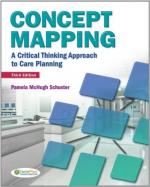|
This section contains 485 words (approx. 2 pages at 300 words per page) |

|
Restriction mapping is a technique that utilizes the ability of restriction enzymes to selectively cleave DNA to obtain a map of the order of the restriction sites. The pattern of the sites, and so the sequences of DNA they have recognized, can be used to clarify the arrangement of bases comprising the DNA region under investigation.
Long-range restriction mapping allows the study of large regions of DNA, particularly mammalian DNA, which can encompass regions that have not yet been cloned-- not yet obtained in any tangible form. The main utility of long-range restriction maps is to place upper and lower limits on the physical distance that separates two or more DNA markers known to be linked together. This information then guides the investigator in deciding whether or not to investigate the particular DNA region in more detail, or whether to investigate other DNA regions...
|
This section contains 485 words (approx. 2 pages at 300 words per page) |

|


